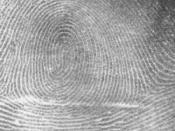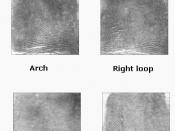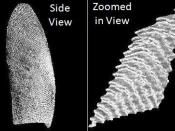Fingerprint Evidence: Fact or Fiction?
A death penalty case involves three men charged with operating a multi-million dollar drug ring linked to four murders. The men involved are Carlos Ivan Llera -Plaza, Wilfredo Martinez Acosta and Victor Rodriguez. These three men sit before U.S. District Court Judge Louis H. Pollak (Sealy 1).
From this information, nothing looks out of the ordinary. A closer look into this case reveals a significant difference from other cases in the past. Judge Louis H. Pollak has ruled that fingerprint identification is unreliable. Judge Pollak banned experts from testifying whether a fingerprint taken from a crime scene matched that of a defendant (The Economist 3). This controversial decision comes at a point in time where fingerprint evidence has been accepted in courtrooms across the United States of America since the early twentieth century. Judges have always regarded fingerprint evidence as scientifically sound in the court system (Stern 3).
In making his ruling, Judge Pollak relied on a 1993 U.S. Supreme Court decision. The decision gives judges the power to decide what scientific evidence is admissible in a trial. The court established the "Daubert" guidelines, which are designed to prompt questions about the scientific sturdiness of certain types of evidence, such as whether it has be adequately tested, what it's error rate is, and, in the case of fingerprinting, whether there are standards for what constitutes a "match" (The Economist 2).
In order for us to determine whether or not fingerprint evidence is scientifically
sound, we need to look at what constitutes a match. Fingerprints are unique. Each person's fingerprint is like a snowflake, there are millions of them, yet no two are exactly alike. I personally find it hard to take a latent print from the scene of a crime, and compare it to a...



Very well
very well written, and completed with thousands of evidence and prooves makes this long writing worth to read.
2 out of 2 people found this comment useful.